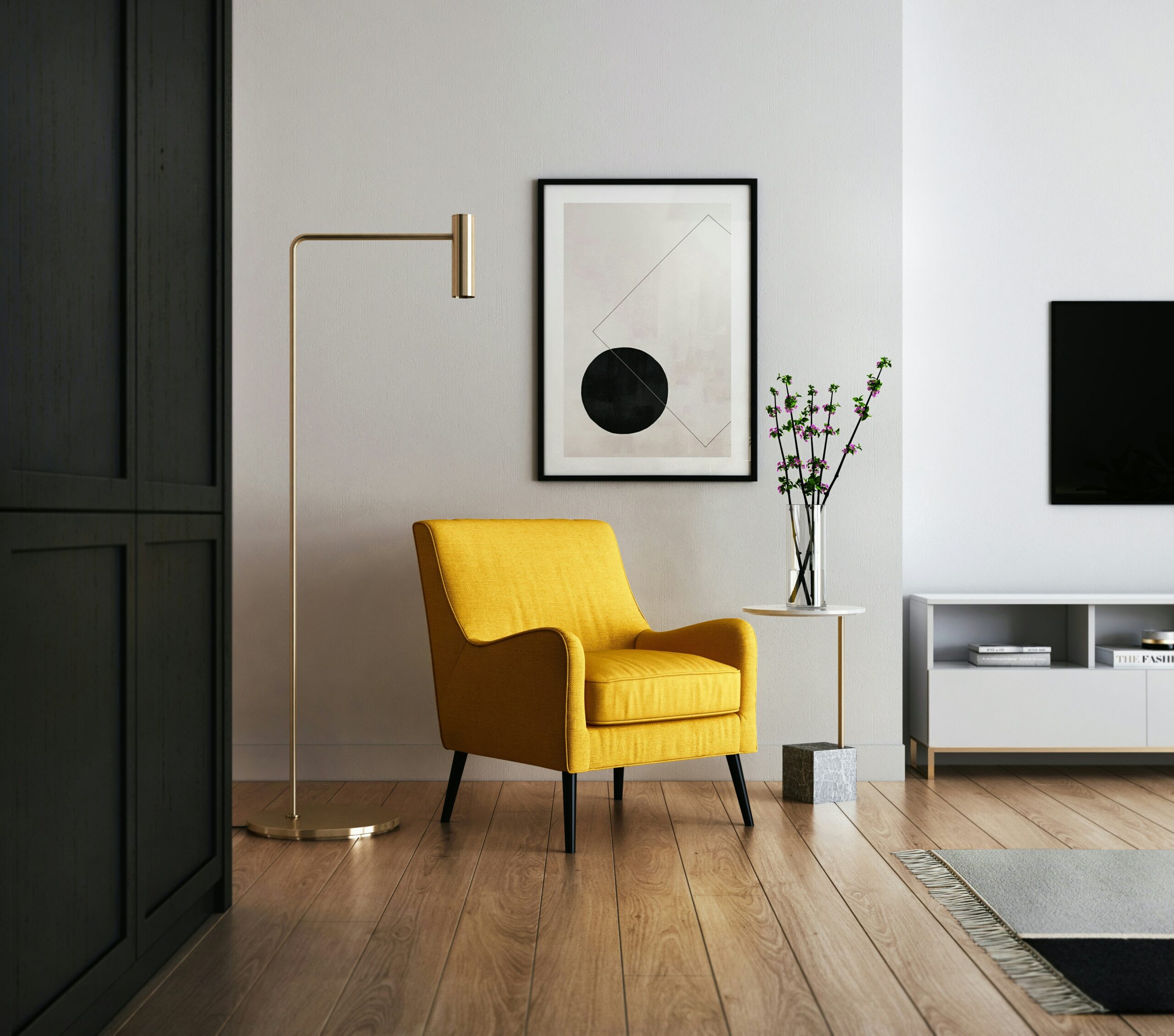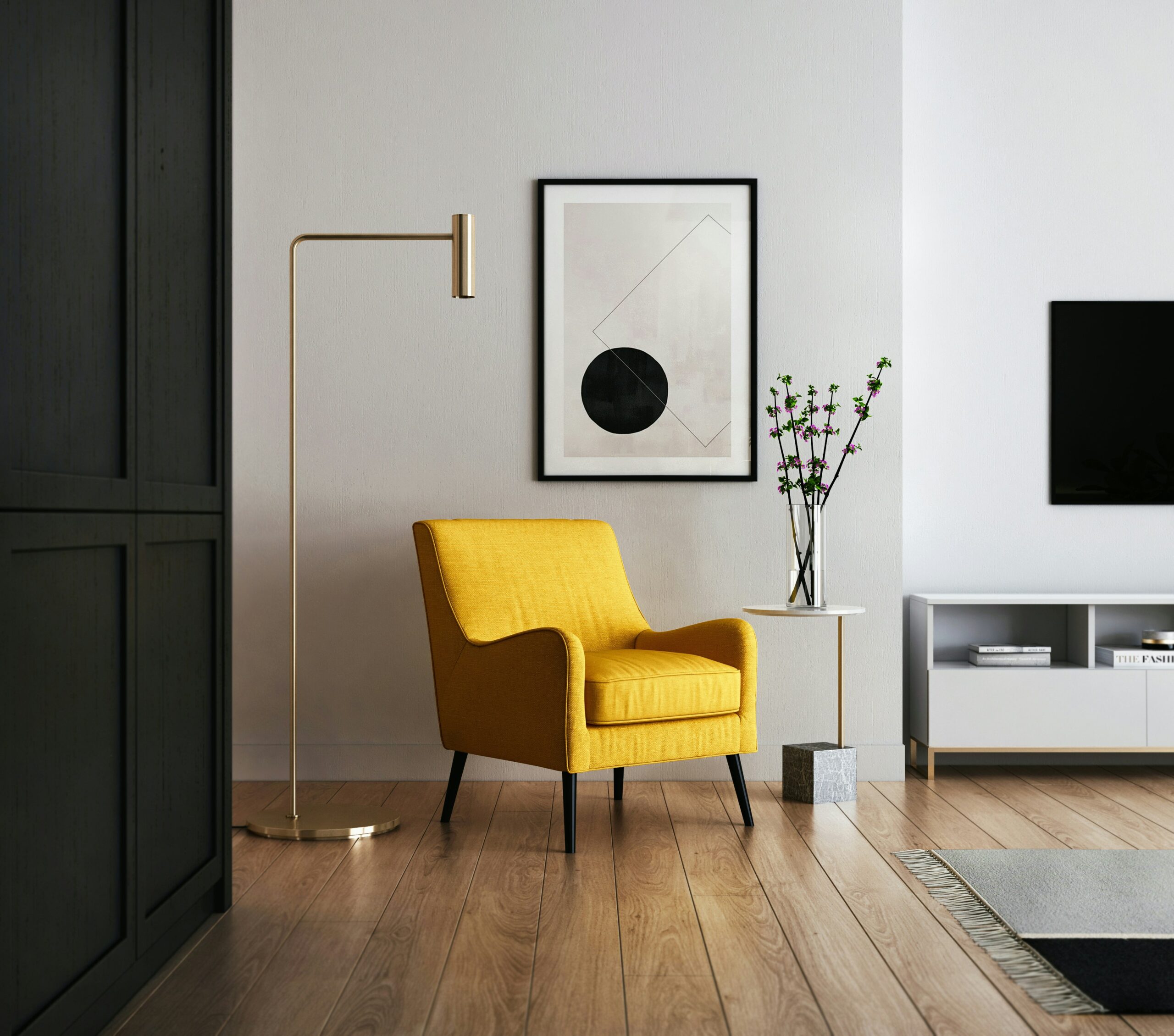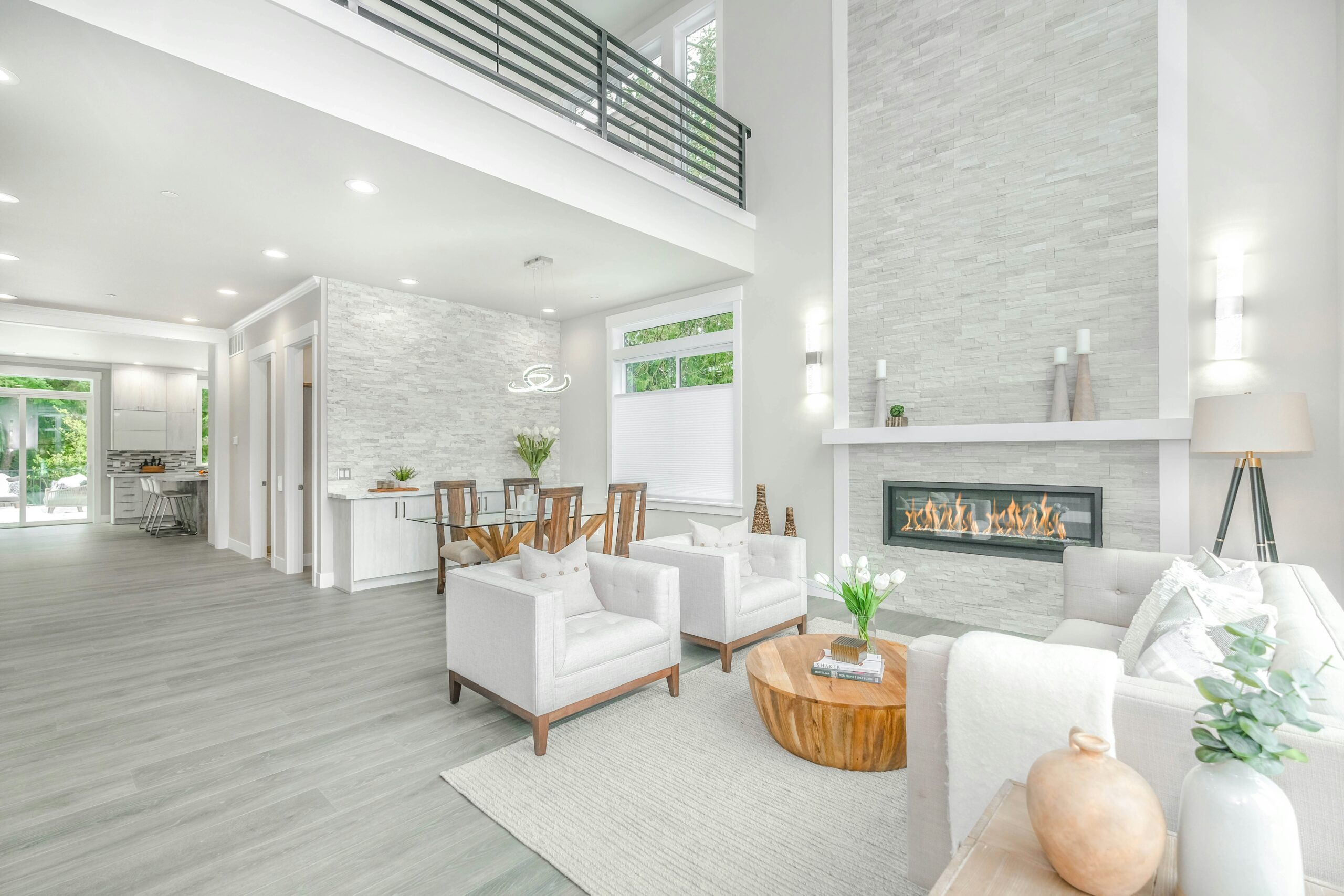The practice of mixing patterns in home design has gained substantial traction among interior decorators and homeowners alike. This design technique consists of combining various textiles, motifs, and colors within a single space to create a harmonious yet dynamic environment. The concept is rooted in centuries of design traditions, from various cultural expressions to modern styles that emphasize individuality and creativity.
Historically, the use of mixed patterns can be traced back to diverse cultural influences, where artisans drew inspiration from their surroundings, resulting in spaces rich with detail and texture. These iterations have evolved, and today’s modern homeowners are embracing, rather than shying away from, the challenge of blending different patterns in a cohesive way. As personal styles become more eclectic, mixing and matching prints has emerged as a prominent trend in contemporary home design.
Incorporating a variety of patterns within one space adds depth, texture, and personality, transforming a simple room into a conversation starter. Different patterns can evoke different moods, ranging from calming to energizing, allowing homeowners to express their unique preferences and styles. Over time, this approach to design has also developed a reputation for being a reflection of one’s personality, as each selection reveals something about the individual’s tastes and lifestyle.
The significance of mixing patterns lies not just in aesthetic appeal, but also in creating an atmosphere that feels lived-in and personal. By skillfully curating a thoughtful combination of designs, homeowners can achieve a space that resonates with comfort and character. As we delve deeper into the nuances of pattern mixing in home design, it becomes evident that this practice is both an art and a science, allowing for infinite creative possibilities.
Understanding Different Types of Patterns
Patterns are an integral aspect of home design, providing visual interest and depth to any space. There are several types of patterns used in interior decor, each contributing a unique feel and ambiance. Understanding these various designs can aid homeowners and designers in making informed choices when selecting materials, furnishings, or wall treatments for a cohesive look.
Geometric patterns are characterized by their structured forms, often utilizing shapes such as squares, triangles, and hexagons. These designs can range from minimalist to intricate and typically evoke a modern or contemporary aesthetic. Geometric patterns are versatile; for example, a geometric print on curtains can complement a solid-colored couch or accentuate a bold wallpaper choice.
Floral patterns bring a sense of nature and vibrant colors into home design. These patterns can range from subtle, small-scale prints to large, dramatic motifs. Floral designs are commonly used in textiles, wall coverings, and upholstery, adding warmth and a touch of femininity. A floral-patterned throw pillow can soften a rigidly modern room, creating a harmonious balance.
Striped patterns are another popular choice, known for their ability to create an optical illusion of height or width, depending on their orientation. Vertical stripes can make a room appear taller, while horizontal stripes can visually widen a space. Stripes can be found in various color schemes, from bold and dramatic to soft and muted, making them highly adaptable to different decor styles.
Abstract designs continue to grow in popularity due to their unique ability to evoke emotions and provide a sense of artistic expression. These patterns often feature unpredictable shapes and colors, allowing for creative freedom. Abstract patterns are ideal for individuals seeking to make a statement or add interest to a space without overwhelming it.
Overall, the key to successfully incorporating these diverse patterns lies in understanding their distinct characteristics and how they can complement each other in home design.
Choosing a Color Palette
When it comes to mix and match pattern home design, selecting an appropriate color palette is paramount. The colors chosen will serve as the foundation upon which the various patterns are layered, impacting the overall aesthetic and mood of a space. Cohesive color schemes promote harmony and balance, allowing for a smooth transition between different patterns and elements within the interior design.
One effective technique for establishing a balanced color palette is the 60-30-10 rule. This guideline suggests that one should allocate 60% of a room’s color usage to a dominant hue, 30% to a secondary color, and 10% to an accent shade. By adhering to this formula, designers can ensure that while patterns may vary significantly, the color scheme remains unified. The dominant color often sets the tone, while the secondary provides depth, and the accent color enhances interest.
Additionally, understanding the principles of the color wheel can greatly aid in creating visually appealing combinations. Complementary colors, which are situated opposite each other on the wheel, create high contrast and vibrance. Conversely, analogous colors, found next to each other on the wheel, yield a more serene and cohesive environment. Mixing these colors effectively can bring a sense of dynamism to patterns, making a bold statement while preserving an inviting atmosphere.
When experimenting with mix and match pattern home design, it is vital to remain mindful of the overall mood one wishes to evoke. Warm colors, such as reds and yellows, can create a vibrant and energetic ambiance, while cooler tones like blues and greens typically evoke calm and relaxation. By thoughtfully selecting a cohesive color palette that aligns with these emotional responses, one enhances not only the visual appeal but also the functional atmosphere of a home.
Layering Patterns: Tips and Tricks
Layering patterns in home design can transform an ordinary room into a visually captivating space. The key to successfully incorporating multiple patterns lies in understanding the principles of proportion, size variation, and scale. First, it is important to establish a focal point in the room, which can be achieved by utilizing a dominant pattern that resonates with the desired aesthetic. For instance, a bold geometric design on a rug can serve as the centerpiece around which other patterns are introduced.
When selecting additional patterns, aim for a variety of scales. Mixing large-scale patterns with smaller ones creates contrast and prevents visual confusion. For example, if your statement piece is an oversized floral print on throw pillows, consider pairing it with a subtle stripe on the curtains or a smaller checkered pattern on a side chair. This interplay of sizes can add depth and interest to the overall design.
It is equally essential to maintain a sense of balance when layering patterns. To achieve this, limit the color palette used across the different patterns. By selecting patterns that share a common color or are complementary, you create harmony within the space. This approach allows the various elements to coexist without overwhelming each other. Additionally, incorporating solid colors or neutrals can serve as a visual anchor, helping to ground the patterns and enhance the overall composition.
Lastly, consider the texture of the materials used in your home design. Patterns can vary not only in visual design but also in tactile quality. Mixing a smooth fabric with a textured one, such as velvet with linen, can further enrich the layered effect and make the space feel inviting. By applying these tips and tricks, homeowners can master the art of layering patterns, achieving a cohesive, stylish, and engaging interior that reflects individual tastes and preferences.
Mixing Patterns in Different Rooms
When it comes to mix and match pattern home design, each room in a house presents unique opportunities and challenges for achieving an aesthetically pleasing result. By understanding the distinctive characteristics of various spaces, homeowners can make informed decisions on how to incorporate different patterns effectively.
In the living room, for example, the use of bold patterns can create a dynamic focal point. A larger piece of furniture, such as a sofa, can be upholstered in a solid color, while the addition of patterned throw pillows or a decorative rug can introduce visual interest. Layering different textures, such as stripes, florals, or geometric designs, can also enhance the room’s character, while ensuring that the color palette remains cohesive. This will ensure that the room feels both inviting and stylish.
Moving to the bedroom, it is essential to maintain a sense of tranquility while mixing patterns. Soft, muted patterns on bedding can create a serene environment, whereas a patterned accent wall can add depth without overwhelming the space. Consider pairing floral patterns with subtle stripes or checks to achieve balance and harmony, aiming to create a restful atmosphere conducive to relaxation.
In the kitchen, functionality is key. Mixing patterns in this space can enhance the aesthetic appeal while maintaining practicality. For instance, patterned dishware and textiles can add charm to an otherwise functional area. Consider introducing a mosaic tile backsplash, which can serve as a captivating focal point, while solid cabinetry or countertops maintain visual stability.
Finally, in bathrooms, where space may be limited, using smaller-scale patterns can help create a cohesive look. Mixing patterned towels, bath mats, and shower curtains can add personality, while tiles can be used to combine various textures. Ultimately, the key is to maintain a balance that ensures each room feels harmonious, inviting, and true to the principles of mix and match pattern home design.
Focal Points and Anchors
In the realm of mix and match pattern home design, establishing focal points is of paramount importance, as they serve to create visual interest and coherence within a space. Focal points can be identified as the standout elements that draw the eye and anchor the overall design. This can be achieved through the strategic use of solid colors, textures, or large statement pieces that complement and harmonize with the surrounding patterns.
One effective approach to creating a focal point is to incorporate a bold, patterned rug in an otherwise neutral space. The rug not only adds a layer of texture but also sets the stage for developing a mix and match pattern home design that feels cohesive. Another option is to utilize patterned throw pillows on a solid-colored sofa. The contrasting patterns enliven the seating area but remain grounded by the sofa’s neutral hue.
Artwork can also serve as an essential focal point. Large canvases or framed prints with splashes of color can make a powerful statement on a feature wall. This becomes particularly effective when the patterns in the artwork resonate with those used in other elements of the room, such as curtains or upholstery. In doing so, the wall art can harmonize the space, allowing for a seamless blend of visuals.
In addition to these elements, blending textures through items such as woven baskets or ceramic vases can also add depth and balance, acting as anchors amid more vibrant patterns. By thoughtfully selecting focal points that reflect the overall style and theme of the home, one can create a well-rounded environment that encourages both comfort and aesthetic satisfaction.
Common Mistakes to Avoid
When embarking on the journey of mixing and matching patterns in home design, several common mistakes can disrupt harmony and lead to an unappealing aesthetic. Understanding these pitfalls is essential for creating a cohesive look that showcases creativity without overwhelming the senses.
One of the primary errors individuals make is mismatching styles. Each pattern has its own unique personality, and failing to acknowledge this can result in a chaotic environment. For instance, combining a vintage floral with a modern geometric might create visual dissonance. To prevent this, aim for patterns that share a common theme or style. For example, consider selecting patterns with similar color palettes or that reflect the same design era.
Another significant mistake is choosing overwhelming designs without considering balance. Bold patterns can make a striking statement, but using too many of them in one space can overpower the room. Instead, consider using one strong pattern as a focal point while opting for more subtle designs to complement it. Incorporating solid colors or neutral patterns can create a sense of balance and allow the larger patterns to shine without competing for attention.
Additionally, ignoring scale can lead to discrepancies that inhibit the overall look of a space. It is crucial to consider the size of the patterns in relation to each other and the room itself. Large patterns tend to dominate a space, while smaller patterns can get lost in larger furniture pieces or expansive walls. To create an appealing mix, combine varying scales thoughtfully; for instance, using larger patterns in larger spaces while incorporating smaller patterns in accents and details.
Avoiding these common mistakes can substantially enhance your home design experience, allowing you to create a stylish and inviting environment that successfully integrates mixed patterns.
Incorporating Textures with Patterns
In the realm of home design, the dynamic interplay between patterns and textures can dramatically elevate the aesthetic appeal of a space. Patterns, whether they are geometric, floral, or abstract, can provide structure and rhythm to interior design. However, the inclusion of different textures can significantly enhance the visual interest of these patterns, creating a rich and tactile environment that engages the senses. Integrating textures with patterns allows for a multi-dimensional experience, transforming a simple decor scheme into a captivating tapestry of design.
When considering how to effectively combine patterns with textures, it is essential to choose complementary materials that harmonize with each other. For instance, pairing a bold floral patterned fabric with a soft velvet can create a striking visual contrast while adding a layer of richness to the overall decor. Textures can be introduced through various elements such as rugs, cushions, curtains, and wall finishes. A chunky knit throw on a patterned chair provides a cozy feel, while a glossy ceramic vase can offer a stunning juxtaposition to a matte patterned tablecloth.
Additionally, the thoughtful selection of finishes can impact the room’s overall ambiance. Smooth surfaces can reflect light, drawing attention to a patterned wallpaper, while rougher textures can absorb sound and create a more intimate atmosphere. Mixing different materials like wood, metal, and fabric further enriches the design, allowing homeowners to explore their personal style. Artfully layering textures along with patterns not only creates visual depth but also invites touch and interaction, encouraging a deeper connection between the inhabitants and their space. Therefore, in any mix and match pattern home design endeavor, incorporating various textures is fundamental to achieving a harmonious and visually appealing environment.
Conclusion: Embrace Your Creativity
As we explore the world of home design, it becomes evident that mixing patterns can breathe life into any space. The creative process of integrating various designs fosters an environment that reflects both individuality and personal style. It is essential to approach this endeavor with an open mind, encouraging experimentation without the fear of making mistakes. The beauty of mix and match pattern home design lies in its inherent flexibility—there are no strict rules to limit your creative expression.
The key takeaways from this guide illustrate that successful pattern mixing hinges on understanding harmony and balance. By paying attention to color schemes, texture, and scale, one can create cohesive yet dynamic interiors. Patterns, when strategically combined, can heighten the visual interest in a room and serve as a conversation starter. Remember, the most inviting spaces are often those that exhibit a blend of styles, showcasing unique stories and personal journeys.
Ultimately, home design should align with your tastes and preferences. Let your imagination be your guide as you embark on this journey of mixing patterns. Consider incorporating elements that represent your personality, whether through bold colors, subtle textures, or eclectic themes. The freedom to experiment empowers homeowners to cultivate spaces that resonate on a deeper emotional level. Therefore, as you navigate your home design paths, embrace your creativity and take pride in the unique aesthetic you develop, while understanding that a personalized approach to mix and match pattern home design can create functional and exquisite living spaces.






Leave a Comment